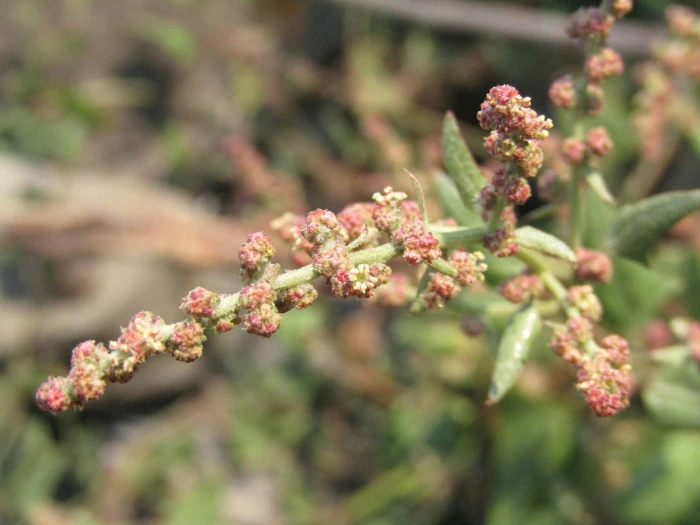Spear-Leaved Orache
(Atriplex prostrata)
Spear-Leaved Orache (Atriplex prostrata)
/
/

© Avilez
CC BY 4.0
Image By:
© Avilez
Recorded By:
Copyright:
CC BY 4.0
Copyright Notice:
Photo by: © Avilez | License Type: CC BY 4.0 | License URL: http://creativecommons.org/licenses/by/4.0/ | Uploader: avilezbf | Publisher: iNaturalist |

























Estimated Native Range
Climate Requirements for Dothan, Alabama
| This Plant | Your Site | Plant Suitability for Your Location | ||
|---|---|---|---|---|
| • Precipitation | 5" - 133" | 53" | Aquatic | Aquatic |
| • High Temp. | 50°F - 104°F | 92°F | Your summer temperatures are normal for this plant. | Excellent |
| • Low Temp. | -28°F - 59°F | 38°F | Your winter temperatures are normal for this plant | Excellent |
This plant should grow very well at your location without additional irrigation.
Summary
Atriplex prostrata, commonly known as spear-leaved orache or fat hen, is an annual herb native to a variety of habitats including coastal areas, saline environments, disturbed sites, and agricultural land across Europe, Macaronesia, northern Africa, Ethiopia, the Middle East, western Siberia, and Central Asia. It has been introduced to many temperate regions worldwide. This plant typically grows to a height of 20-90 cm and has a sprawling habit. The leaves are variable in shape, often spear-like, with a silvery-green hue due to a covering of tiny reflective hairs. The inconspicuous green flowers bloom from July to September and are wind-pollinated. While not known for showy flowers, Atriplex prostrata is valued for its ability to thrive in poor soils and its use in phytoremediation to remove contaminants from the soil.
In cultivation, Atriplex prostrata is often used for its foliage in ornamental plantings, as ground cover, or in wildlife gardens to support birds and insects. It is drought-tolerant and can grow in a range of soil types, though it prefers well-drained soils and can tolerate saline conditions. It is suitable for full sun to part shade. There are no major disease problems, but it can self-seed prolifically and may become weedy. In regions where it is not native, it can outcompete local vegetation and is considered potentially invasive. Gardeners should be cautious and check local regulations before planting.CC BY-SA 4.0
In cultivation, Atriplex prostrata is often used for its foliage in ornamental plantings, as ground cover, or in wildlife gardens to support birds and insects. It is drought-tolerant and can grow in a range of soil types, though it prefers well-drained soils and can tolerate saline conditions. It is suitable for full sun to part shade. There are no major disease problems, but it can self-seed prolifically and may become weedy. In regions where it is not native, it can outcompete local vegetation and is considered potentially invasive. Gardeners should be cautious and check local regulations before planting.CC BY-SA 4.0
Plant Description
- Plant Type: Herb
- Height: 0.5-1.5 feet
- Width: 1-2 feet
- Growth Rate: Moderate
- Flower Color: Green, Brown
- Flowering Season: Summer, Fall
- Leaf Retention:
Growth Requirements
- Sun: Full Sun, Part Shade
- Water: Medium
- Drainage: Medium, Fast
Common Uses
Erosion Control, Low Maintenance, Salt Tolerant
Natural Habitat
Native to a variety of habitats including coastal areas, saline environments, disturbed sites, and agricultural land
Other Names
Common Names: Spear Saltbush, Prostrate Orach, Halberd-Leaf Orache, Hastate Orache, Spear-Leaved Orache, Hastate Saltplant, Spear-Leaf Orache, Orache
Scientific Names: Atriplex prostrata, Atriplex halimioides, Atriplex hastata subsp. depressa, Atriplex hastata var. boucheri, Atriplex hastata var. macrotheca, Atriplex hastata var. salinum, Atriplex spinaciaefolia
GBIF Accepted Name: Atriplex prostrata